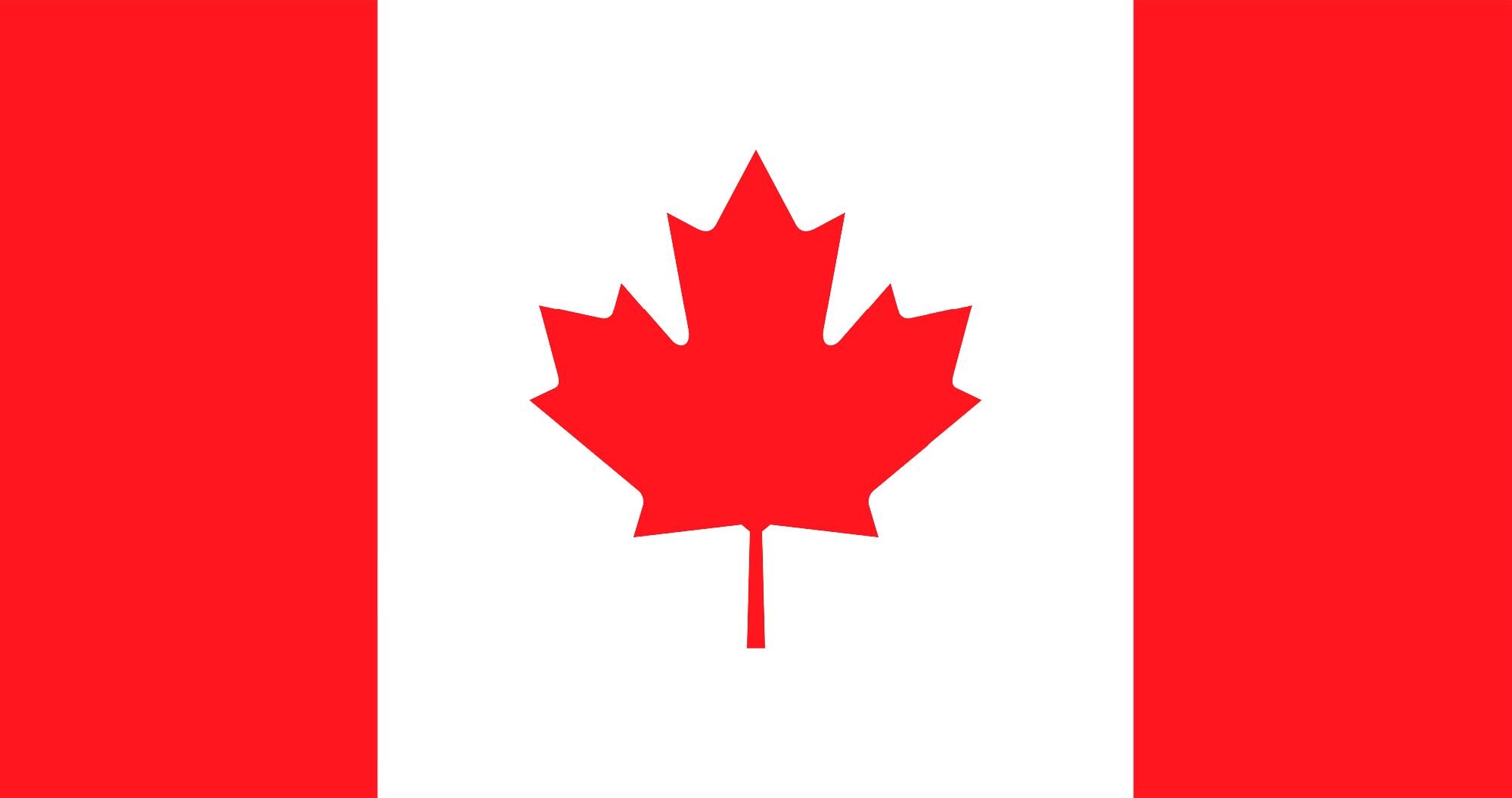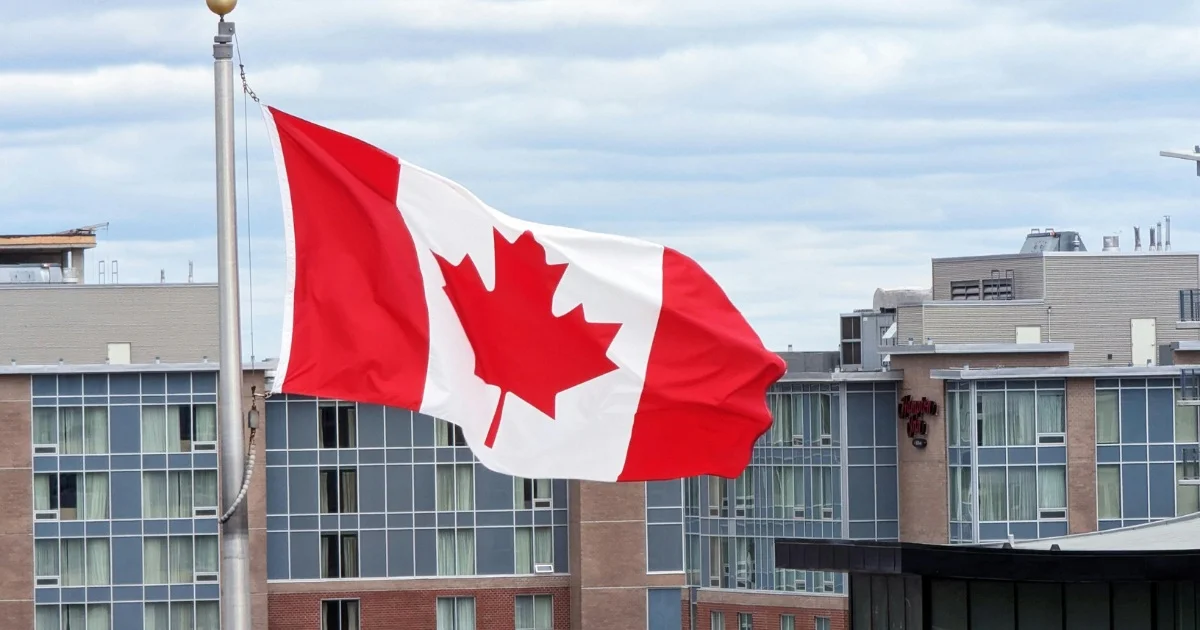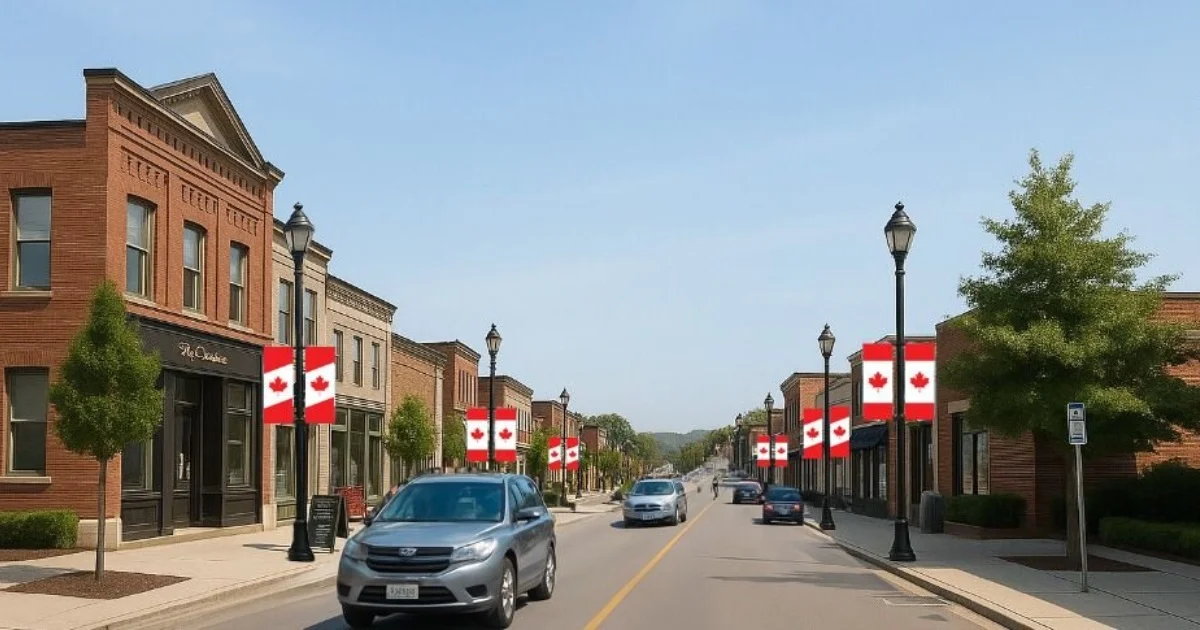 Affichez votre fierté et préparez-vous pour la fête du Canada avec nos décorations sur le thème du Canada >>
Affichez votre fierté et préparez-vous pour la fête du Canada avec nos décorations sur le thème du Canada >> 
 Affichez votre fierté et préparez-vous pour la fête du Canada avec nos décorations sur le thème du Canada >>
Affichez votre fierté et préparez-vous pour la fête du Canada avec nos décorations sur le thème du Canada >> 

How you choose to fly your Canadian flags isn’t dictated by law, but depending on the situation and application, there is a lot of etiquette involved. Whether it’s for an important ceremony or you just want to add a patriotic touch to your home, let’s talk about Canada flag etiquette and the surprising rules you probably didn’t know.
Many Canadians are as patriotic as they come, so knowing how to properly hang a flag, based on time and location, is important. Don't worry, Classic Displays is here to provide you with all the Canadian flag etiquette!
Let’s go through the surprising rules of Canadian flag etiquette you might not know.
You can fly the National Flag of Canada at any time, day or night. Unlike some flags, it doesn’t need to be lit after sunset. When it comes to displaying a Canadian flag from the home or office, the rules aren’t as intimidating as you think:
When displaying your Canadian flag, it’s best to make sure that you put it in a central place that really highlights its honour. If you want to pair the Canadian flag with other banners, it’s probably best to have it displayed higher than the rest; however, this can change based on the celebration or circumstance.
Make sure your flag is always hung upright, with the maple leaf facing outwards and clearly visible. Hanging the flag improperly looks not only sloppy but also disrespectful, depending on who you ask. While it’s unlikely you’ll be ousted from the community with pitchforks for hanging a flag improperly from your home property, other scenarios, such as government speaking arrangements, are another story.
Make sure you’re using an undamaged material that can withstand the unreliable Ontario weather. Also, ensure the flag proportions are correct: the flag's width should be twice its height.
In Canada, the National Flag must be flown at all federal buildings, military bases (in and outside of the country), as well as airports. Here is a more detailed list of buildings and locations that are required to display the Canadian Flag:
Federal Government Buildings
This includes parliament buildings such as the Senate and House of Commons, as well as Federal administrative offices.
Crown Corporations
This includes headquarters and offices owned by federal corporations.
Military Installations
This includes bases and headquarters of the Canadian Armed Forces.
Canadian Embassies, High Commissions, and Consulates
This includes all diplomatic missions abroad, meaning all missions are required to display Canada’s National Flag.
Royal Canadian Mounted Police (RCMP) Buildings
This includes RCMP headquarters and other major facilities.
National Museums and Historic Sites
And finally, all facilities operated by Parks Canada and national museums.
The position of the Canadian flag is important when it comes to practicing proper etiquette. While some of these steps may seem relatively simple, they're still important to note, especially if you're not in the know!
When you want to fly a flag horizontally, the Canadian National Flag is always flown with the central maple leaf pointing upwards. When you want to fly a flag vertically, the Canadian National Flag is always flown with the central maple leaf pointing upwards.
Flying the Canadian flag upside down is considered generally disrespectful, unless in very specific, internationally recognized circumstances. According to the Government of Canada, the only time the flag should be flown upside down is to signal "international distress in instances of extreme danger to life." Occasionally, the flag may be flown upside down as a sign of protest.
However, in what cases would you display a flag horizontally? Take a look at Classic Display’s Horizontal Canada Flag Street Pole Banner: it’s the perfect patriotic decoration. They can also be flown like this on a flag pole for specific occasions, such as sporting events or other official celebrations.
When hanging the National Flag vertically, the flag itself needs to be positioned so that the upper area of the leaf is pointing to the left, ensuring it's visible to those standing and facing the flag. Flying the flag in this manner ensures the canton (the most important part of the flag) faces the top left corner. This is a position of honour, and is generally considered proper flag etiquette.
The Canadian flag must always be flown on its own designated flagpole, with the flag’s sleeve closest to the pole itself. As mentioned, the canton needs to be placed nearest the top of the pole/mast. The flag needs to be flown on its own flagpole because it’s considered poor etiquette to fly Canada’s National Flag alongside another, regardless of type, on the same pole. The flag CAN be flown alongside other flags, just not on the same pole.
There are three different types of flagpoles and applications you’ll commonly see:
Exterior permanent poles: Generally located outside of buildings, although they are occasionally featured on top of buildings or on proximate grounds. These flag poles need to be fitted with functional hoisting devices (halyard and pulley) so the flag is easy to raise, lower, and bring to half-mast.
Exterior portable flagpoles: Similar applications as mentioned above, paired with the convenience of being portable. These flag poles can be erected and dismantled as needed/based on season or celebration, and have a similar halyard and pulley system as permanent poles.
Interior flag poles: These you’ll often see during important government events or military speeches. These poles are also portable and are generally on a much smaller scale. They tend to have a base holding the pole upright, allowing the flag to drape.
Need a Canadian flag? Classic Displays offers durable Canadian flags in various dimensions to meet your needs.
(Available Sizes: 45 cm x 90 cm, 70 cm x 140 cm, 90 cm x 180 cm, 115 cm x 230 cm, 135 cm x 270 cm, 180 cm x 360 cm)
Flying a flag at half-mast has serious national significance. Flags flown at half-mast signify respect, as well as collective sorrow during times of national mourning. When the Canadian flag is flown at half-mast, it's the nation's way of recognizing significant loss and tragedy, while honouring those involved.
All of the National Flags are globally recognized and provide a visual representation of your country's sense of sorrow or pride, depending on the circumstance. This is why flag etiquette and education are essential.
The Government of Canada sees the half-masting of a flag as so significant that they've implemented rules for half-masting the Canadian flag, ensuring that the application is consistent across all federal buildings and installations. Provinces, territories, and municipalities across the country have subsequently adopted similar rules out of respect and honour.
The term “dipping the flag” generally refers to lowering a flag downward or even tilting it towards the ground. It’s a sign of respect during important military ceremonial contexts, generally when being carried by flag bearers. This is another example of a circumstance where portable flag poles or staffs are useful.
To avoid confusion, it’s important to note that the National Flag is NEVER dipped.
Instead, some of the flags that may be dipped during a military ceremony include:
Military Unit Standards and Colours
Flags of Allies or International Organizations
When looking at Canada’s specific historical practices, dipping the flag is generally only done during military ceremonies. Otherwise, there are no other notable contexts in Canada where dipping a flag is considered necessary or even customary.
The official etiquette of dipping the flag goes as follows: the flag bearers (carrying the flag so it flows horizontally) carefully lower flagstaffs or poles at a 45-degree angle. In some cases, the flags can also be lowered until they reach the ground.
However, in other ceremonial military contexts, when salutes are being given, the flag is never dipped and instead is allowed to fly freely. Flag bearers extend their hands to let the flag flow until the conclusion of the salute, where the flags are then gathered.
Now that we’ve gone through a lot of the historical significance, let’s explore some additional ways you can display the Canadian National Flag.

As Decor
There are plenty of Canadian-themed decorations and displays you can feature to show your patriotism without necessarily flying a Canadian flag. Classic Displays specializes in holiday displays, including Canadian-themed displays that are perfect for national holidays. These come with fewer historical rules. We also have an array of flags and banners to choose from!
On Your Car
When it comes to Canadian flag etiquette, the respective place of honour for flying the flag is the front right fender on the passenger's side. If you're flying the flag alone, this is the official spot for it.
On a Boat or Ship
Canadian ships and boats should fly the National Flag of Canada in its proper national colours, even if it's just a leisure watercraft. Canadian ships and boats should fly the National Flag of Canada in its proper national colours, even if it's just a leisure watercraft. Foreign vessels, on the other hand, can fly the Canadian flag as a means of courtesy when docking in a Canadian port. In this circumstance, the flag is traditionally flown from the foremast.
Flying Flags Alongside the National
As we mentioned, the National Flag of Canada should always be flown on its own flagpole. However, other flags can be flown next to the National Flag, including:
Indigenous Flags
Other National Flags
Municipal Flags
Organizational Flags (NATO, United Nations)
A proudly Canadian-owned and operated company, Classic Displays has been bringing magic to events for more than 46 years. Whether you need flags and banners or large light-up displays, we have everything you need to show your community you love Canada as much as we do! Contact us today.